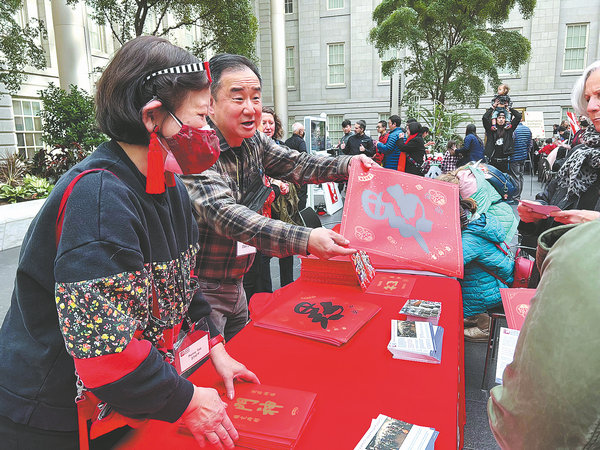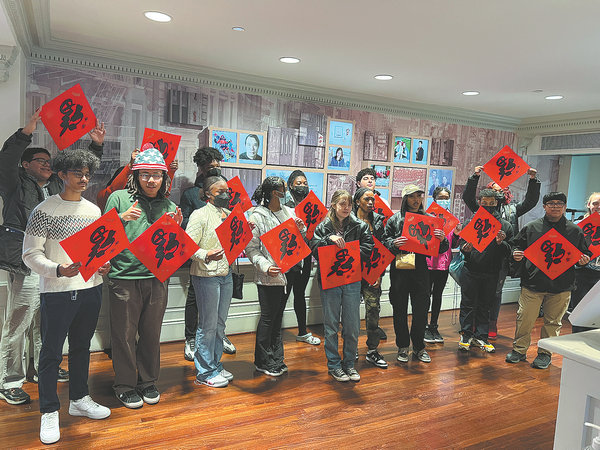

A cultural exhibition titled Taoism: Pursuing Harmony Between Human and Nature, one of the recent key events held by the Chinese American Museum in Washington served as a vital exchange platform for visitors to learn about traditional Chinese culture and experience the charm of Taoism.
Jointly organized by the museum and the Shanghai Taoist Association, the exhibition showcased the essence of Taoism in China through the displays of four major themes: Taoist culture, Taoist history, Taoist music and Taoist clothing with gorgeous robes, hand-painted talismans, calligraphy, musical instruments and portraits of the three Gods from the Sanqing Hall, the highest deity of Taoism.
Zhao Haisheng, minister counselor for cultural affairs at the Embassy of China in the US, said: "Chinese culture originated from Taoism and has continued to influence generations of Chinese at home and abroad." He said the exhibition will help local residents experience the long history and culture of China. The displays also enhanced the development of Sino-US relations in the cultural field and efforts should be made to resolve differences and build a platform for cooperation between the two countries.

Susan Lee, a Maryland state senator, said the exhibition has special significance and can help more Chinese and overseas Chinese think about their responsibilities.
Taoism is a religion and philosophy that has shaped Chinese values, daily life, and spirituality for thousands of years.
Like other major Chinese religions such as Confucianism and Buddhism, the doctrines and ethics of Taoism are not exclusively spiritual or philosophical.
Rather, they encourage a holistic way of life that emphasizes individual well-being and harmony with one's world.
Taoism originated from traditional folk beliefs in rural China during the Shang Dynasty (c. 16th century-11th century BC). During the late Han Dynasty (206 BC-AD 220), the philosophy incorporated the concept of Yin and Yang and underwent further religious reform in the Northern and Southern Dynasties (420-581).
The museum will hold a series of exhibitions this year including the large-scale Cheongsam performance at the University of Washington in June, the Buddhist Culture and Art Exhibition in September and the first Chinese cultural tour for American youths.